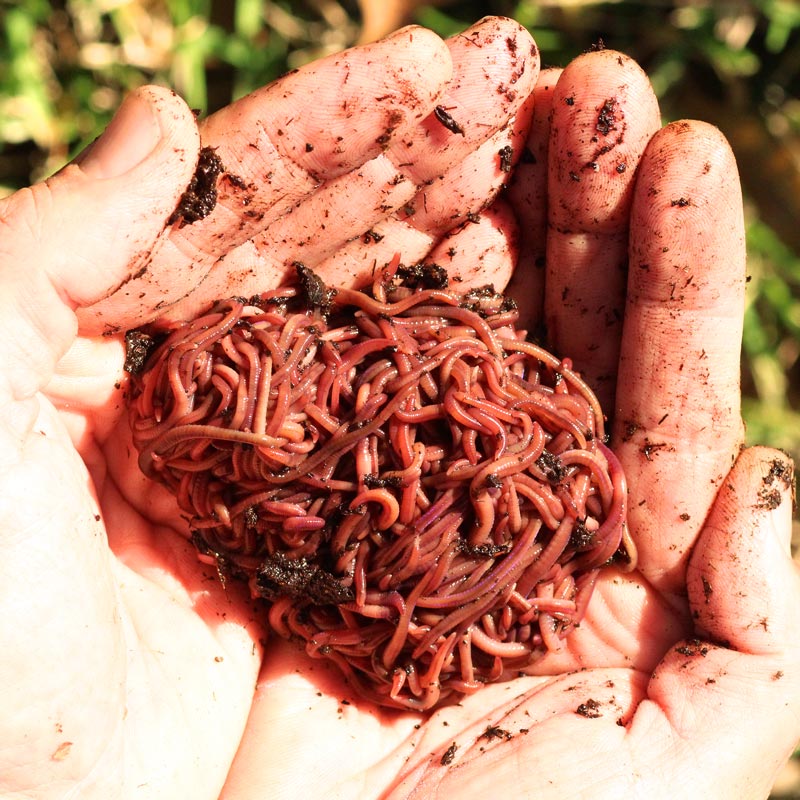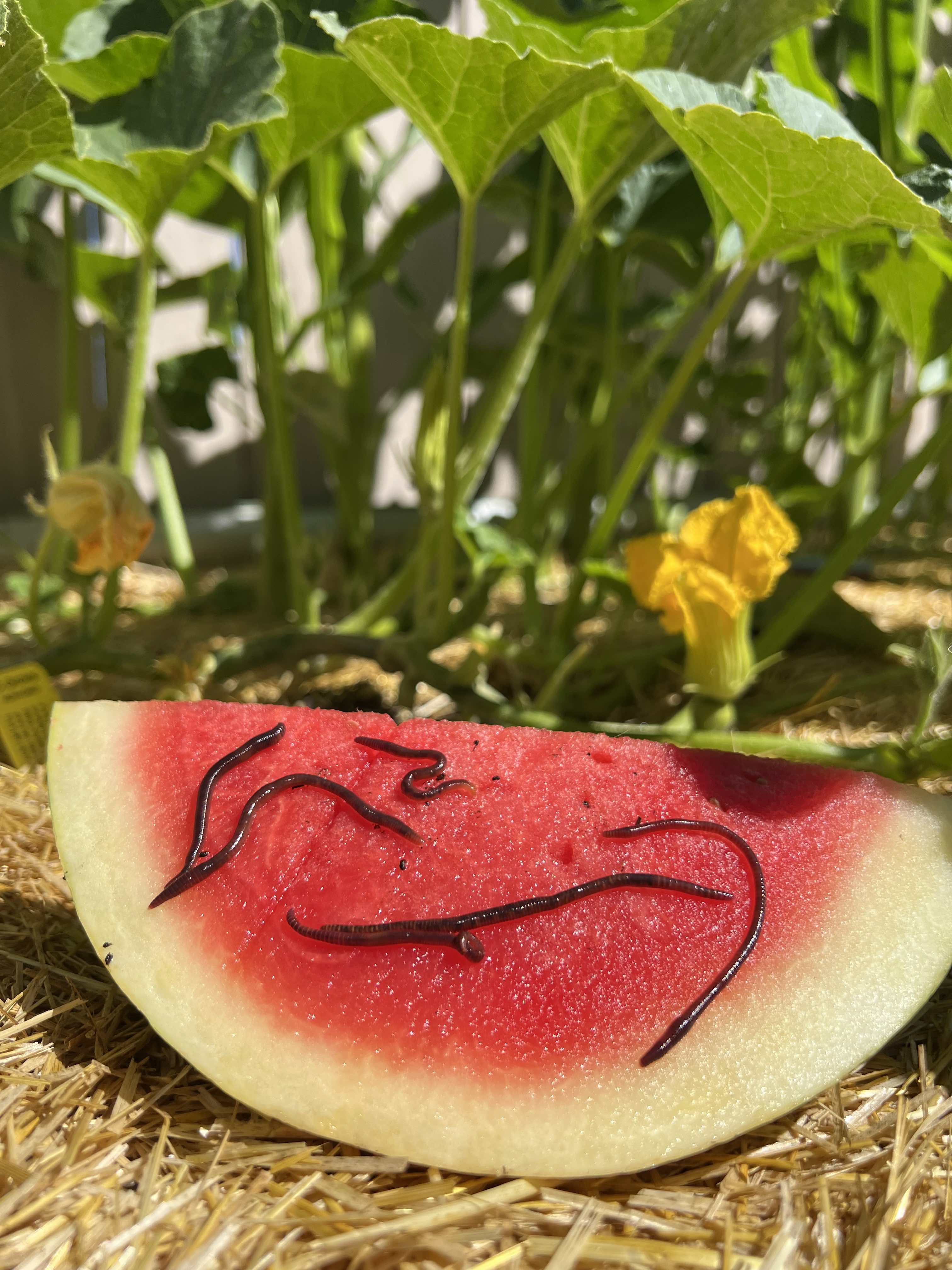Taking Full Advantage Of the Benefits of Red Wiggler Worms: A Comprehensive Handbook for Home Gardeners and Urban Farmers
In the realm of sustainable horticulture methods, red wiggler worms stand as unsung heroes, silently changing organic waste right into nutrient-rich spreadings that can work marvels for dirt health and wellness. As home gardeners and metropolitan farmers increasingly seek cost-effective and environmentally pleasant ways to improve their gardens, the prospective advantages of utilizing the power of red wigglers can not be overemphasized. From minimizing kitchen waste to growing much healthier plants, the utilization of these simple animals supplies a wide variety of benefits. By checking out the details of how to efficiently take care of and maximize the benefits of red wiggler worms, individuals can unlock a riches of chances for improving the sustainability and efficiency of their horticulture undertakings.
Understanding Red Wiggler Worms
Red Wiggler worms, renowned for their efficient composting capabilities, are a species of earthworms extensively made use of in vermiculture methods. These worms, scientifically understood as Eisenia fetida, prosper in decaying natural product, making them ideal prospects for composting (Red Wiggler Worms). Red Wigglers are ravenous eaters, with the ability of eating their very own weight in natural waste daily. Their gastrointestinal process breaks down raw material into nutrient-rich spreadings, which are a useful source for enhancing dirt and advertising plant development.
One trick attribute of Red Wiggler worms is their reproductive rate. These hermaphroditic animals possess both male and women reproductive organs, permitting them to replicate quickly under beneficial conditions. A mature Red Wiggler can create numerous offspring in a brief duration, making sure a constant population within a composting system.

Establishing a Worm Bin
When developing a worm bin for vermiculture objectives, proper preparation and focus to information are vital for developing a conducive environment for Red Wiggler worms. Begin by selecting an appropriate container for your worm container. This can be a plastic or wood container with a lid to maintain wetness degrees and shield the worms from light. Ensure that the bin has water drainage holes at the bottom to avoid waterlogging.

Area the worm bin in a cool, dark place away from direct sunlight and severe temperatures. By adhering to these steps, you can establish up a flourishing worm container that will efficiently process natural waste into nutrient-rich vermicompost for your yard.
Feeding and Maintaining Worms
Making sure a nourishing and balanced diet plan is critical for the health and wellness and productivity of Red Wiggler worms in a vermiculture system. Red Wigglers are starved eaters, efficient in eating their own body weight in natural issue daily. To maintain a successful worm populace, it is vital to supply them with a selection of food scraps such as vegetables and fruit peels, coffee grounds, tea bags, and smashed eggshells. It is essential to prevent feeding them citrus fruits, onions, garlic, milk items, meat, and oily foods as these can be hazardous to the worms or trigger undesirable odors in the container.
Correct dampness levels are also essential for the health of Red Wiggler worms. By carefully checking their diet plan, moisture, and ecological problems, home gardeners and metropolitan farmers can sustain a productive and healthy and balanced Red Wiggler worm population for composting objectives.
Gathering Worm Castings
To efficiently draw out nutrient-rich worm spreadings from the vermicompost, a systematic harvesting procedure is important for making best use of the composting benefits. The very first action in harvesting worm spreadings is to urge the worms to migrate to one side of the container.
After the castings have actually been harvested, it is essential to separate any type of continuing to be worms from the spreadings to avoid hurting them throughout storage or application. One efficient technique is to develop cone-shaped stacks of spreadings under intense light. Worms will instinctively move far from the light, permitting easy splitting up and removal.
Lastly, the collected worm spreadings need to be stored in an amazing, dark, and dry place to maintain their top quality and efficiency as a nutrient-rich soil modification. By adhering to these actions, home garden enthusiasts and urban farmers can optimize the advantages of red wiggler worms in their vermicomposting systems.
Making Use Of Worm Castings in Gardening
The incorporation of nutrient-rich worm castings into garden soil can considerably improve plant growth and general soil health. Worm castings, also referred to as vermicast, are a natural plant food generated by red wiggler worms as they damage down raw material. These spreadings are rich in important nutrients like nitrogen, phosphorus, potassium, and useful microorganisms that promote plant growth and improve dirt framework.
When using worm castings in gardening, it is necessary to mix them extensively you can try here right into the dirt or use them as a top clothing around plants. The slow-release nature of worm spreadings makes sure a stable supply of nutrients to plants in time, lowering the threat of nutrient leaching and advertising long-lasting soil fertility. In addition, worm spreadings help improve dirt aeration, water retention, and microbial activity, creating a healthy setting for plant origins to flourish.

Conclusion
In verdict, the application of red wiggler worms in home gardening and urban farming can considerably benefit soil health and plant growth. By comprehending exactly how to set up and preserve a worm bin, feed the worms properly, and gather their nutrient-rich castings, gardeners can take full advantage of the benefits of these earthworms.
In the realm of sustainable gardening practices, red wiggler worms stand as unsung heroes, quietly changing natural waste into nutrient-rich spreadings that can work wonders for soil health and wellness.When establishing a worm bin for vermiculture purposes, correct preparation and attention to information are essential for developing a helpful setting for Red Wiggler worms. The very first step in see this page harvesting worm spreadings is to urge the worms to migrate to one side of the bin. Worm castings, additionally recognized as vermicast, are a natural fertilizer generated by red wiggler worms as they damage down organic matter. By understanding just how to set up and maintain a worm container, feed the worms appropriately, and gather their nutrient-rich castings, garden enthusiasts can make best use of the advantages of these earthworms.